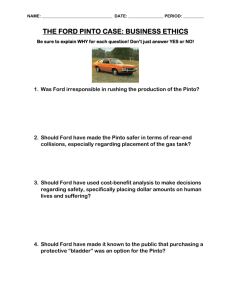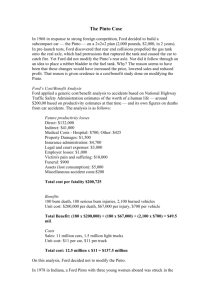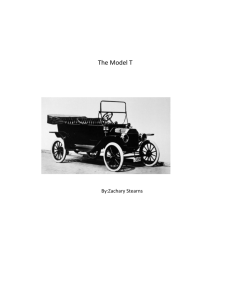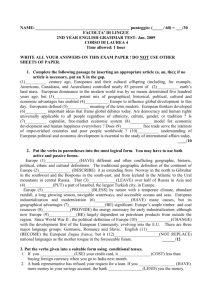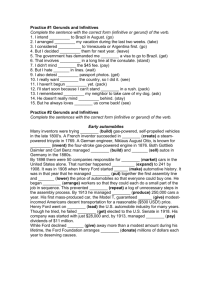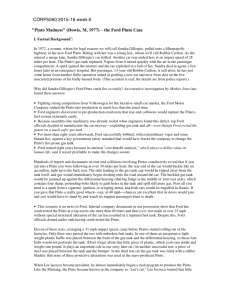Issues in Business Ethics
advertisement
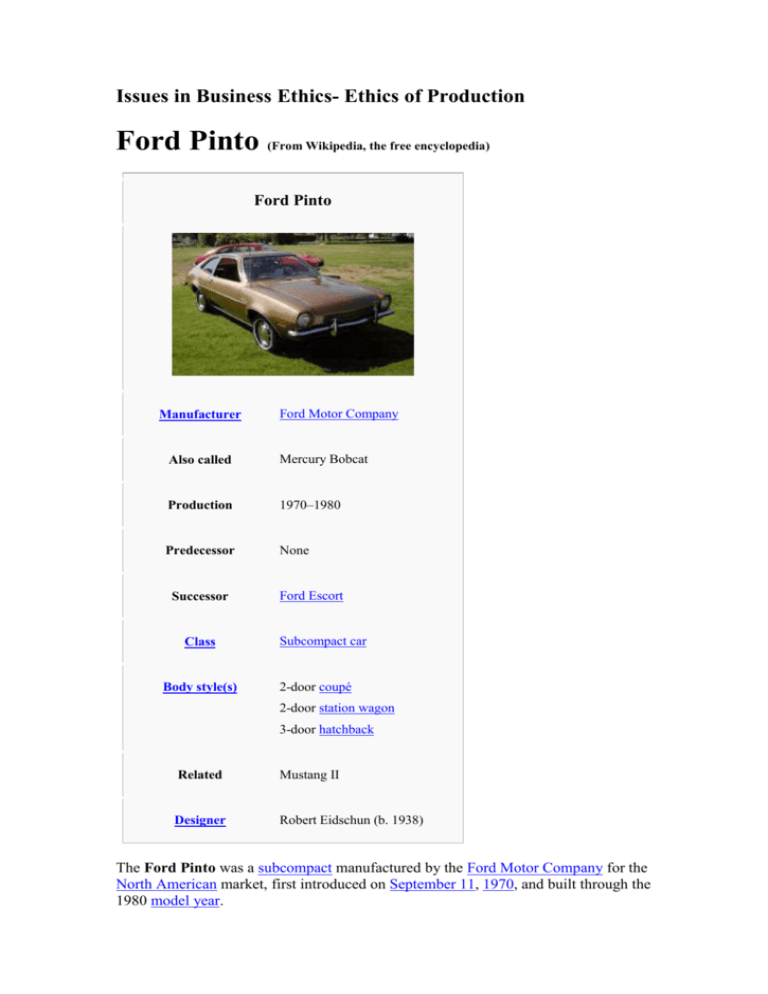
Issues in Business Ethics- Ethics of Production Ford Pinto (From Wikipedia, the free encyclopedia) Ford Pinto Manufacturer Ford Motor Company Also called Mercury Bobcat Production 1970–1980 Predecessor None Successor Class Body style(s) Ford Escort Subcompact car 2-door coupé 2-door station wagon 3-door hatchback Related Mustang II Designer Robert Eidschun (b. 1938) The Ford Pinto was a subcompact manufactured by the Ford Motor Company for the North American market, first introduced on September 11, 1970, and built through the 1980 model year. Safety problems Through early production of the model, it became a focus of a major scandal when it was alleged that the car's design allowed its fuel tank to be easily damaged in the event of a rear-end collision which sometimes resulted in deadly fires and explosions. Critics argued that the vehicle's lack of a true rear bumper as well as any reinforcing structure between the rear panel and the tank, meant that in certain collisions, the tank would be thrust forward into the differential, which had a number of protruding bolts that could puncture the tank. This, and the fact that the doors could potentially jam during an accident (due to poor reinforcing) made the car a potential deathtrap. Ford was aware of this design flaw but allegedly refused to pay what was characterized as the minimal expense of a redesign. Instead, it was argued, Ford decided it would be cheaper to pay off possible lawsuits for resulting deaths. Mother Jones magazine obtained the cost-benefit analysis that it said Ford had used to compare the cost of an $11 repair against the cost of paying off potential law suits, in what became known as the Ford Pinto memo.[4][5] The characterization of Ford's design decision as gross disregard for human lives in favor of profits led to major lawsuits, criminal charges, and a costly recall of all affected Pintos. While Ford was acquitted of criminal charges, it lost several million dollars and gained a reputation for manufacturing "the barbecue that seats four."[6] Nevertheless, as a result of this identified problem, Ford initiated a recall which provided a dealer installable "safety kit" that installed some plastic protective material over the offending sharp objects, negating the risk of tank puncture."[7] The most famous Ford Pinto product liability case resulted in a judicial opinion that is a staple of remedies courses in American law schools. In Grimshaw v. Ford Motor Co.,[8] the California Court of Appeal for the Fourth Appellate District reviewed Ford's conduct, and upheld compensatory damages of $2.5 million and punitive damages of $3.5 million against Ford. It also upheld the judge's reduction of the punitive damages from the jury's original verdict of $125 million. Of the two plaintiffs, one was killed in the collision that caused her Pinto to explode, and her passenger, 13-year old Richard Grimshaw, was badly burned and scarred for life. However, a 1991 law review paper by Gary Schwartz[9] argued that the case against the Pinto was less clear-cut than commonly supposed. Twenty-seven people died in Pinto fires. Given the Pinto's production figures (over 2 million built), this was no worse than typical for the time. Schwartz argued that the car was no more fire-prone than other cars of the time, that its fatality rates were lower than comparably sized imported automobiles, and that the supposed "smoking gun" document that plaintiffs claimed showed Ford's callousness in designing the Pinto was actually a document based on National Highway Traffic Safety Administration regulations about the value of a human life rather than a document containing an assessment of Ford's potential tort liability.
